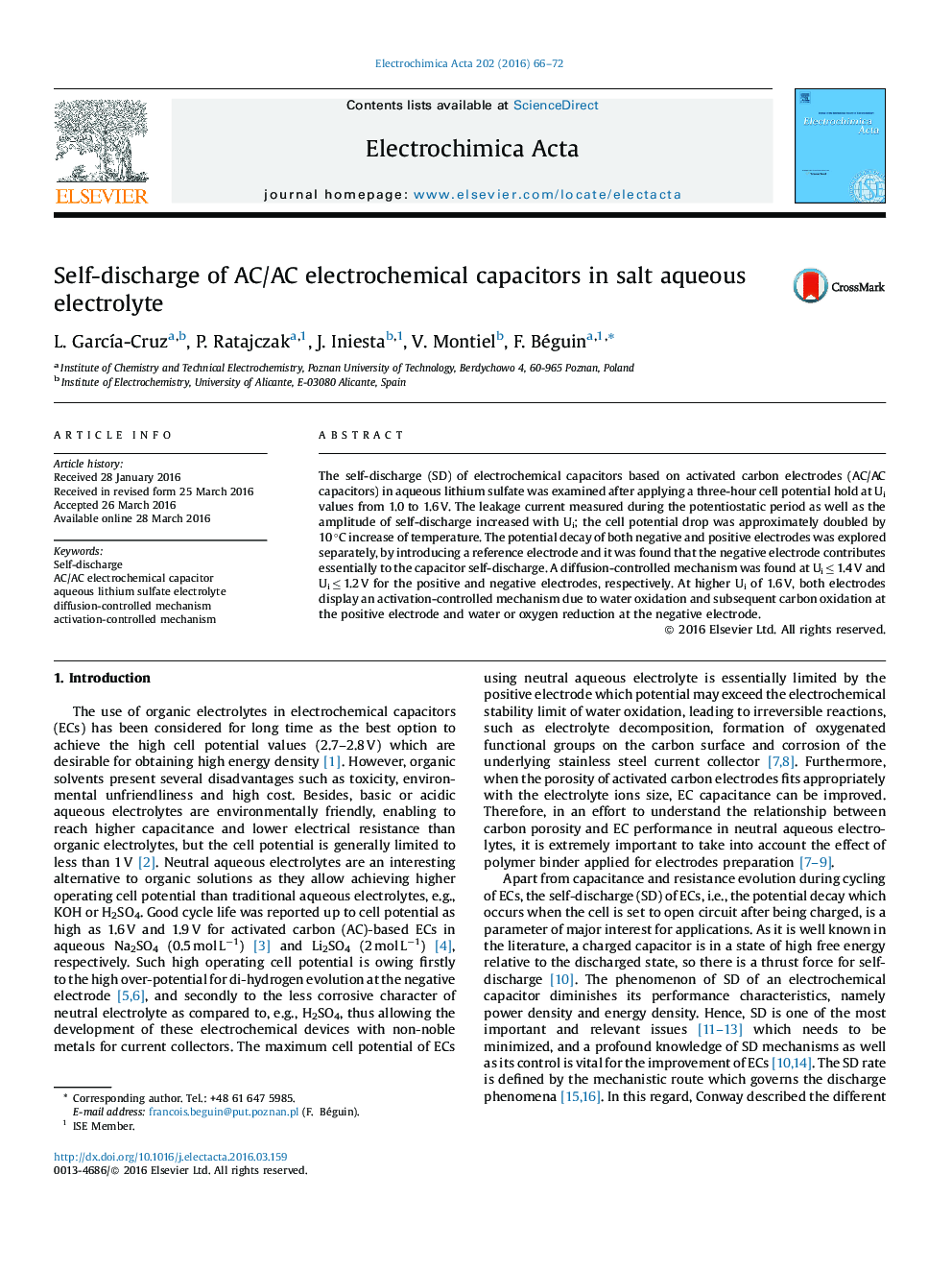| کد مقاله | کد نشریه | سال انتشار | مقاله انگلیسی | نسخه تمام متن |
|---|---|---|---|---|
| 183056 | 459533 | 2016 | 7 صفحه PDF | دانلود رایگان |

The self-discharge (SD) of electrochemical capacitors based on activated carbon electrodes (AC/AC capacitors) in aqueous lithium sulfate was examined after applying a three-hour cell potential hold at Ui values from 1.0 to 1.6 V. The leakage current measured during the potentiostatic period as well as the amplitude of self-discharge increased with Ui; the cell potential drop was approximately doubled by 10 °C increase of temperature. The potential decay of both negative and positive electrodes was explored separately, by introducing a reference electrode and it was found that the negative electrode contributes essentially to the capacitor self-discharge. A diffusion-controlled mechanism was found at Ui ≤ 1.4 V and Ui ≤ 1.2 V for the positive and negative electrodes, respectively. At higher Ui of 1.6 V, both electrodes display an activation-controlled mechanism due to water oxidation and subsequent carbon oxidation at the positive electrode and water or oxygen reduction at the negative electrode.
Journal: Electrochimica Acta - Volume 202, 1 June 2016, Pages 66–72